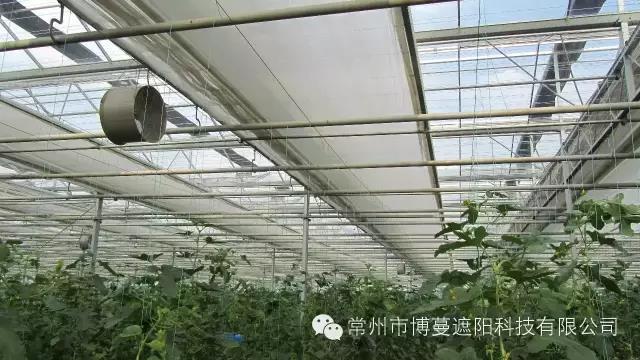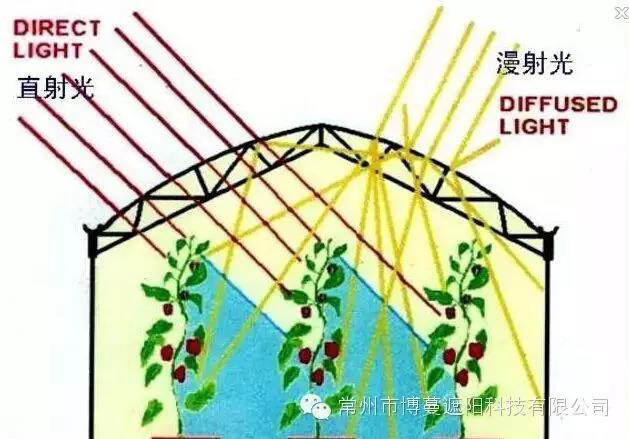

The production and use of scattered light in greenhouses has become very common in greenhouses located near the equator. Growers use special plastic sheds that scatter light to increase planting yield while avoiding burns to crops. Scattered light means that the light is scattered in all directions while being evenly distributed in an area.
The Horticulture Institute of Wagglingen University in the Netherlands first carried out research on scattered light. This research is mainly aimed at the effect of scattered light on horticultural crops and the internal mechanism of crops using scattered light. They pointed out that this method can also be used for climates similar to the Netherlands. The Horticulture Institute of Waglin University in the Netherlands first selected cucumbers and some potted plants in the greenhouse to study the effects of scattered light on the plants in the greenhouse.
In the study of the impact of scattered light on the forest environment system, it is found that plants grown under scattered light conditions can better utilize scattered light through the intrinsic mechanism of plant leaves. The Horticulture Institute of Waglingen University in the Netherlands began to study how the crops in the greenhouse are affected by scattered light, and whether they can form comparable results with the forest environment system and other crops. Research on crop samples showed promising results. Cucumber crops were put into experimental research in Dutch greenhouses, and they were cultivated under different greenhouse covering materials, one of which can be directly exposed to light, and the other covering material has a scattering function.
The experimental results show that compared with direct light, the crop yield is increased under the action of scattered light, the number of fruits increased by 7.8%, and the fruit weight also increased by 4.8%, but the reduction in the greenhouse under the cover material used to make scattered light With 4% light, this means that if there is no loss of light, the result will be better. The light passes through the covering material with scattering function to form scattered light inside the greenhouse, so that the leaves in the middle of the crop intercept more light, which leads to an increase in photosynthesis, thus forming a higher fruit yield.
In the experiment, there was no indication that the blades close to the ground played an important role in the production process. In fact, the leaves close to the ground turned yellow, confirming that less photosynthesis occurred. Only the middle leaf played a more active role and made a higher contribution to the process of photosynthesis.
The researchers concluded that scattered light is beneficial to the yield of cucumber plants, especially during periods of long sunlight and relatively large amounts of direct light.
Driven by the results of the greenhouse cucumber experiment, the Horticultural Institute of Wagglingen University in the Netherlands began similar experiments on potted plants. The selected species are chrysanthemum, longevity flower, Schefflera and banyan. This experiment also shows the effect of scattered light on crop growth, and the crop-related growth rate is higher in the experiment. In a short period of time, chrysanthemums have more and larger leaves, indicating that this production process has been promoted. The same result is also observed in Schefflera. Under the action of scattered light, the temperature of the leaves of the crop is lower than normal. However, longevity flowers and banyan trees only grow in autumn and grow faster at the beginning of the experiment. In winter (November), covering materials with scattering function no longer show advantages, and the positive effect of scattered light cannot make up for 4% of the light loss, and crop growth at this light level is not promoted.
Obviously, this study shows that in regions with mild climate, greenhouses have higher requirements for covering materials, including the requirement that covering materials have a scattering function, but will not reduce light to increase the level of greenhouse production. In winter, a covering material with scattering function is not necessary, because the clouds scatter sunlight during this period. The scattering covering material is more beneficial when there is more direct light in a mild climate, also in the three seasons of spring, summer and autumn.
Here we recommend Boman PES series and WAS series sunshade and heat preservation screen
When light passes through the scattering covering materials of the greenhouse, namely: PES series and WAS series sun-shading and heat preservation screens, part of the light deviates from the main propagation direction and scatters to the surrounding environment. This light becomes scattered light. All growers who have used this kind of screen can feel soft and uniform, and moderate light is more conducive to the healt

